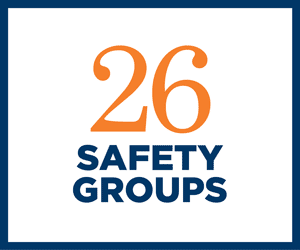Rebutting Treatment Guidelines: Be Specific, Scientific
Sunday, March 14, 2004 | 0
Last year's workers' compensation reform statutes, effective 1/1/04, dictate the use of the American College of Occupational and Environmental Medicine Occupational Medical Practice Guidelines (ACOEM Guidelines) until at least 12/01/04, when the administrative director is supposed to have adopted a medical treatment utilization schedule. In both situations, the Guidelines and the utilization review standards, the governing standard of applicability is a presumption of correctness that may be rebutted by "a preponderance of the evidence establishing that a variance from the guidelines is reasonably required to cure and relieve the employee from the effects of his or her injury."
LC 4604.5(a) contains this language as it applies to the administrative director's standards, and subsection (c) applies this language to the ACOEM Guidelines. Notwithstanding the intended purpose of the statute, and the reliance on that intended purpose to declare a reduction in medical treatment costs, a review of prior case law interpreting the "preponderance of the evidence" standard in rebutting like presumptions indicates that the industrial medical practice may not be significantly impacted.
The preponderance of the evidence standard for rebutting a medical opinion or standard received considerable work out after the 1993 amendments to Labor Code sections 4061 and 4062. Those two sections made the treating physician's opinion presumptively rebuttable where the parties sought the opinion of a Qualified Medical Examiner. One of the first cases to tackle this question was the WCAB En Banc decision Minniear v. Mt. San Antonio Comm. Coll. Dist. 61 CCC 105 (09/18/96). The Board gives some clues as to what will rebut a presumption: (1) there must be a sound, medically scientific basis to the opinion - one that is outside the bounds of a lay witness; i.e. expert medical testimony supported by scientific data; (2) the timing of opinions is irrelevant unless an opinion is clearly out of date; (3) adherence to the specific requirements of Regulation 10606 (specific requirements of a medical report) is absolutely necessary to give the opinion greatest weight.
The Board in Minniear references Evidence Code sections 601 and 606:
"Evidence Code section 60l states that a presumption is not evidence, it is a required assumption of fact. Evidence Code section 606 goes on to say that the effect of a presumption affecting the burden of proof 'is to impose upon the party against whom it operates the burden of proof as to the nonexistence of the presumed fact.' The Law Revision Commission comment on that section notes that '[i]n the ordinary case, the party against whom it is invoked will have the burden of proving the nonexistence of the presumed fact by a preponderance of the evidence.'"
Thus, the application of treatment guidelines in any particular case may be rebutted, but the physician seeking to overcome those guidelines must be prepared to (1) attack underlying facts that support the presumption, and (2) distinguish the individual case at hand from the presumed facts.
The Minniear case was analyzed at length by the Second Appellate District in Keulen v. WCAB, 66 Cal.App.4th 1089 (09/23/98). The Keulen court acknowledge the Minniear analysis: "Evidence from a lay witness is not substantial evidence; medical proof is required on diagnosis, prognosis and treatment which are beyond the bounds of ordinary knowledge."
Unlike the proponent in Minniear though, the proponents in Keulen were successful in defeating the presumption:
"Keulen has more than met the requirements of the statute, as interpreted by Minniear, to rebut Doctor Mooney's position. Doctor Mooney stated that Keulen's complaints are consistent with the attempted fusion and that Keulen may be considered permanent and stationary as of January 11, 1996. But Doctor Mooney also stated, 'There does, however, still appear to be a lucency in the area [of the attempted fusion].' Doctor Hentz agreed that 'there is some persistent radiographic lucency,' even though he felt clinically there was fusion. Accordingly, Doctor Mooney cautioned that '[s]hould [Keulen] develop recurrence of pain[,] ... I would recommend a further imaging study of the quality of the fusion ....' Doctor Mooney's report regarding whether or not the joint had been fused was equivocal at best. Nonetheless, Doctor Mooney opined that as of January 11, 1996, Keulen's condition was permanent and stationary and only affected his thumb.
"Keulen developed recurrent pain that became worse. Furthermore, he developed numbness in his fingers, a new symptom from that known at the time Doctor Mooney last saw and released him to work full time at his former position. As Doctor Mooney recommended, Doctor Schwartz ordered new X-rays again revealing 'what appears to be a nonunion at the carpometacarpal joint of the thumb' consistent with Keulen's recurrent, increased pain and the development of ulnar neuropathy.
"Doctor Schwartz's medical report provided specific evidence that Keulen's condition was not stable. The new evidence established that Keulen's condition was neither permanent nor stationary."
Essentially, the Keulen court said that the change in medical condition of the injured worker, not documented by the original medical opinion, and scientifically supported in the report of Dr. Schwartz, was a preponderance of the evidence supporting a rebuttal of the presumption.
This position is technically no different that the standards that are being applied in Section 4604.5 regarding treatment guidelines. Indeed, there are many aspects of the ACOEM guidelines that are not even accounted for because of a lack of scientific evidence to support any guideline (remember that these guidelines are 'evidence based' - thus if there was no evidence, then the guidelines are silent as to that particular procedure).
Treating physicians, now more than ever, will need to write solid, credible medical reports with sound analysis based on an accurate recitation of the facts and scientifically valid medical evidence to seek treatment out side of the guidelines. These factors should be set forth clearly, in enumerated paragraphs for easy reading and digestion, in a direct contrast to the specific guideline items to be rebutted.
-------------------
The views and opinions expressed by the author are not necessarily those of workcompcentral.com, its editors or management.




Comments